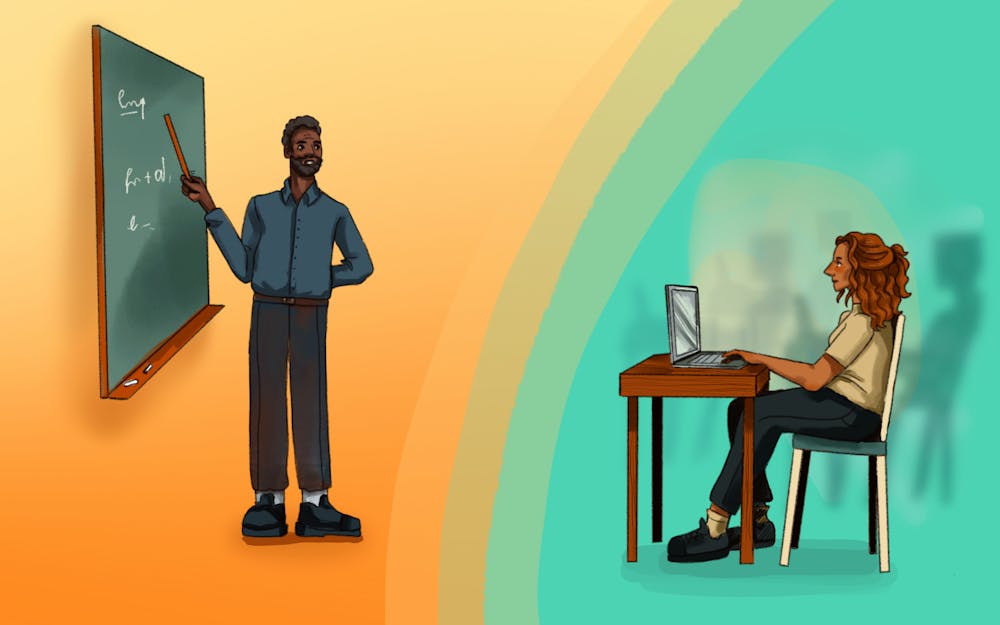From notebooks to laptops, and from pencils to keyboards, technology has completely changed our methods of learning. Our education barely resembles what it did a couple of years ago. Gone are the days of a classroom within four walls and the confinement of education within it. The education world has seen a dramatic upheaval, with the implementation of technology spanning every department and every school.
With the COVID-19 pandemic unexpectedly falling upon us in March 2020, technology played a crucial role in not just connecting us with each other as we stayed confined to our houses but also ensuring there were the least possible number of disruptions when it came to our learning as students.
Technology has been extremely beneficial for the growth of educational systems around the world, as it provides a wide array of opportunities and different resources. Today, technology provides us with a range of resources for flexible learning, including educational apps, online quizzes and flashcards, which has become a huge driver in modern education systems. Additionally, various softwares programs, including Zoom and Google Docs, support students both inside and outside of the classroom, as they choose what learning method works for them best. With most of these resources being free and available in a single internet search, students can investigate a whole new style of learning, one that can be tailored to suit their individual needs.
As a student who went to school before, during and after the COVID-19 pandemic, I have first-hand experience when it comes to seeing how rapidly technology and its relationship to our education has developed. From working through my notebooks to joining Zoom calls from the comfort of my bedroom, I have experienced both the pros and cons of technology. I have always been extremely grateful for such a resource that gave me the opportunity to engage in my education at such a crucial time. However, I, like many other students, have become a victim of the cons associated with technology, whether it is my attention span deteriorating or being unable to keep focus on something as simple as an open tab on my laptop. Often the TikTok app on my phone acts as the biggest distraction.
The growing use of technology comes with its drawbacks, with the worst of the impacts being on the actual students it seems to benefit. Being unable to interact with their professors in person and having to study in an environment that students tend to use for non-academic purposes on a day-to-day basis has led to a global loss in attention span over all ages, making working more difficult and learning more challenging. Moreover, the constant use of devices brings forth the idea of temptation and misuse, with students occasionally being caught playing games or browsing social media, disrupting valuable learning time. Kim I. Mill, a senior director of strategic external communications and public affairs for the American Psychological Association, said on their podcast with psychologist Gloria Mark that, “when (students are) distracted, it takes them longer to get back and focus again on that thing that they were distracted from.
“So, I worry that when young children are spending so much time on the screen, it acculturates them to think that this is normal behavior to be on a screen,” psychologist Gloria Mark said on the podcast.
Additionally, having devices around students has led them to use platforms such as ChatGPT to complete assignments that they are not willing to work on themselves. About one-third of college students reported using ChatGPT for academic work in the past year, and 46% said they frequently used the tool to do their homework. Additionally, about three in four users are likely to recommend ChatGPT to another student. The loss of this control on the quality of work has severely impacted teachers’ style of teaching and ability to have a long-lasting educational impact, a worrying sign for the future of technology in education.
Overall, the introduction of technology into our day-to-day education has been a mixed bag. It has changed the way students are taught but also the way we learn with it, becoming a staple in our newest generation.
Nonetheless, although technology comes with many benefits, its drawbacks must be kept in mind to ensure that students are not being influenced in a negative manner. This can be done by simply controlling how much technology is involved in a student's day-to-day life and in their daily learning. It is up to those who are involved in students’ academic and social lives to initiate changes that can develop how they learn whether that is encouraging them to draft an essay on paper or read a hard-copy book to make up for the time spent scrolling on their devices. Working with technology and its relationship with our education is extremely essential for the overall learning and growth of students around the world, as it not just develops their skills and knowledge, but also prevents them from the damage that technology has had on students in recent years.
Ayzah Khan (she/her) is a sophomore studying journalism and marketing.






